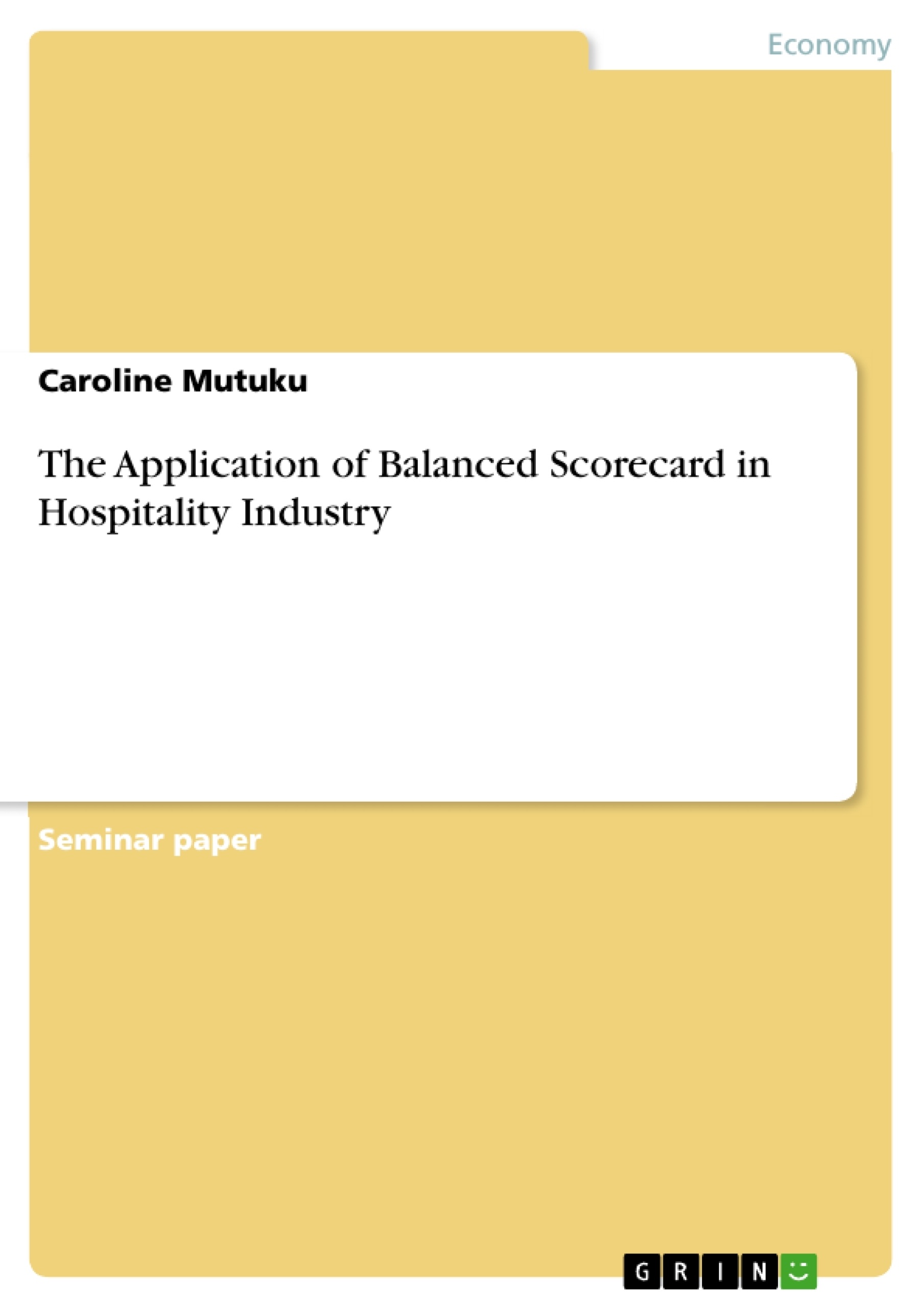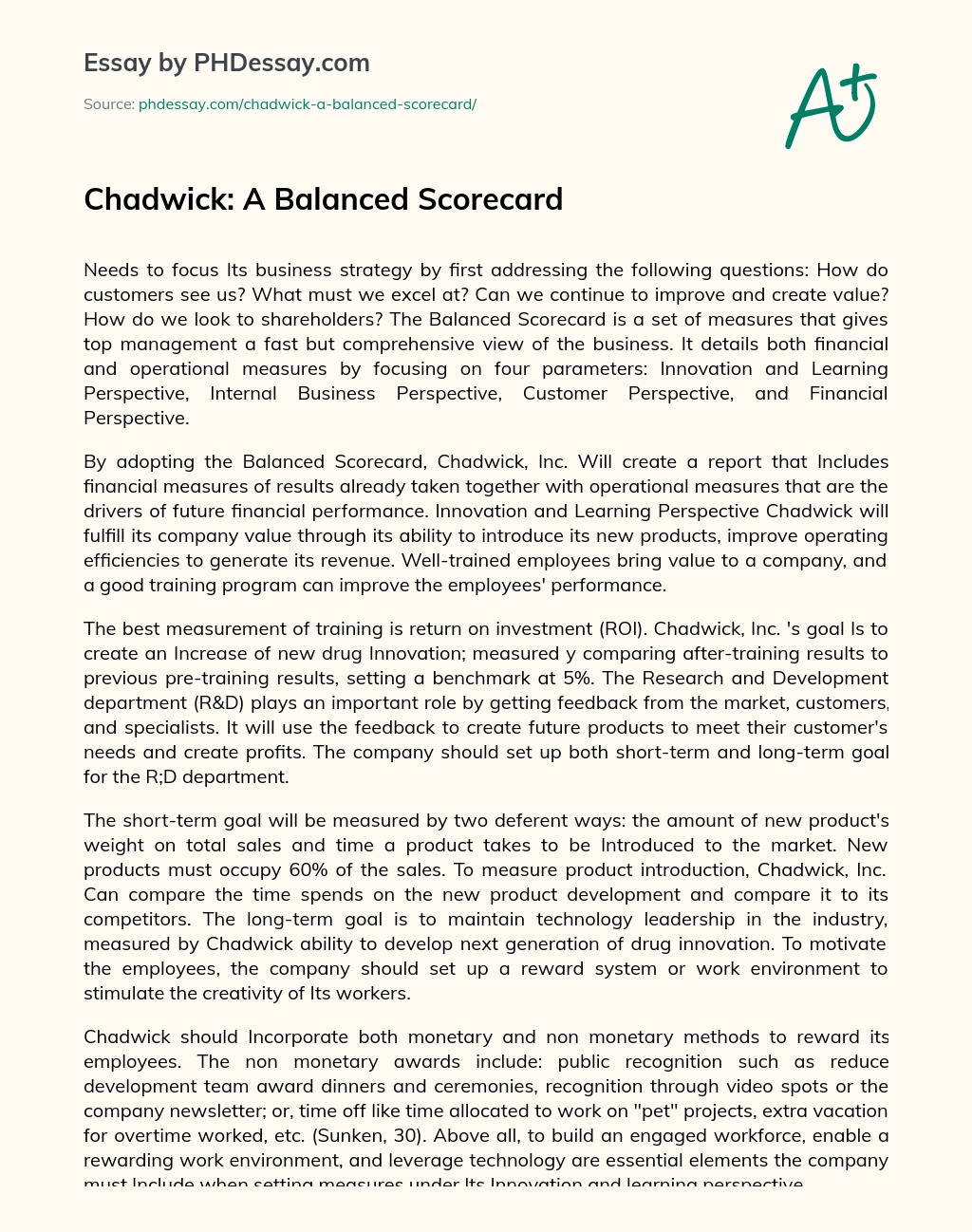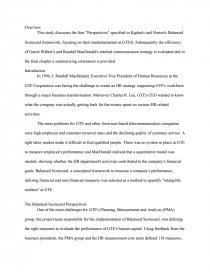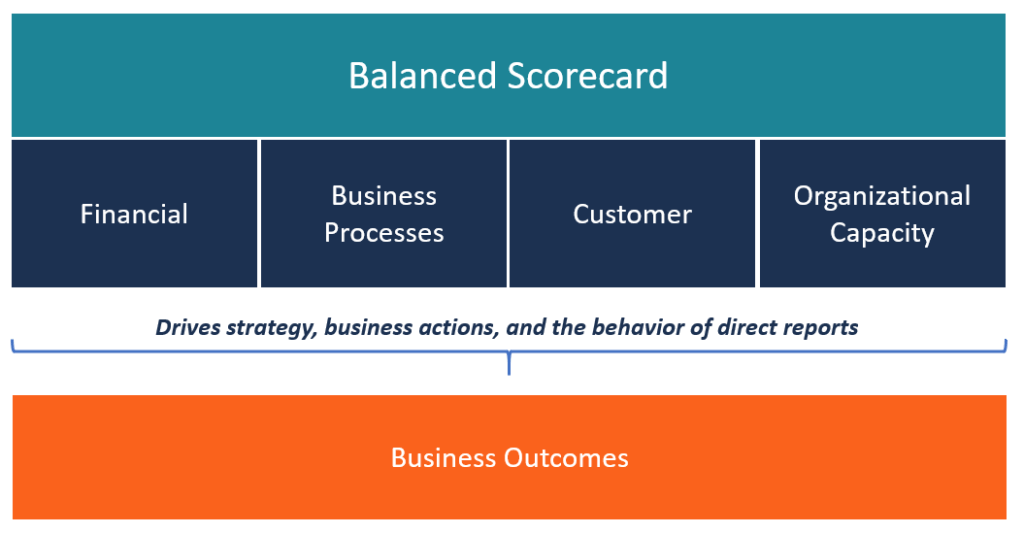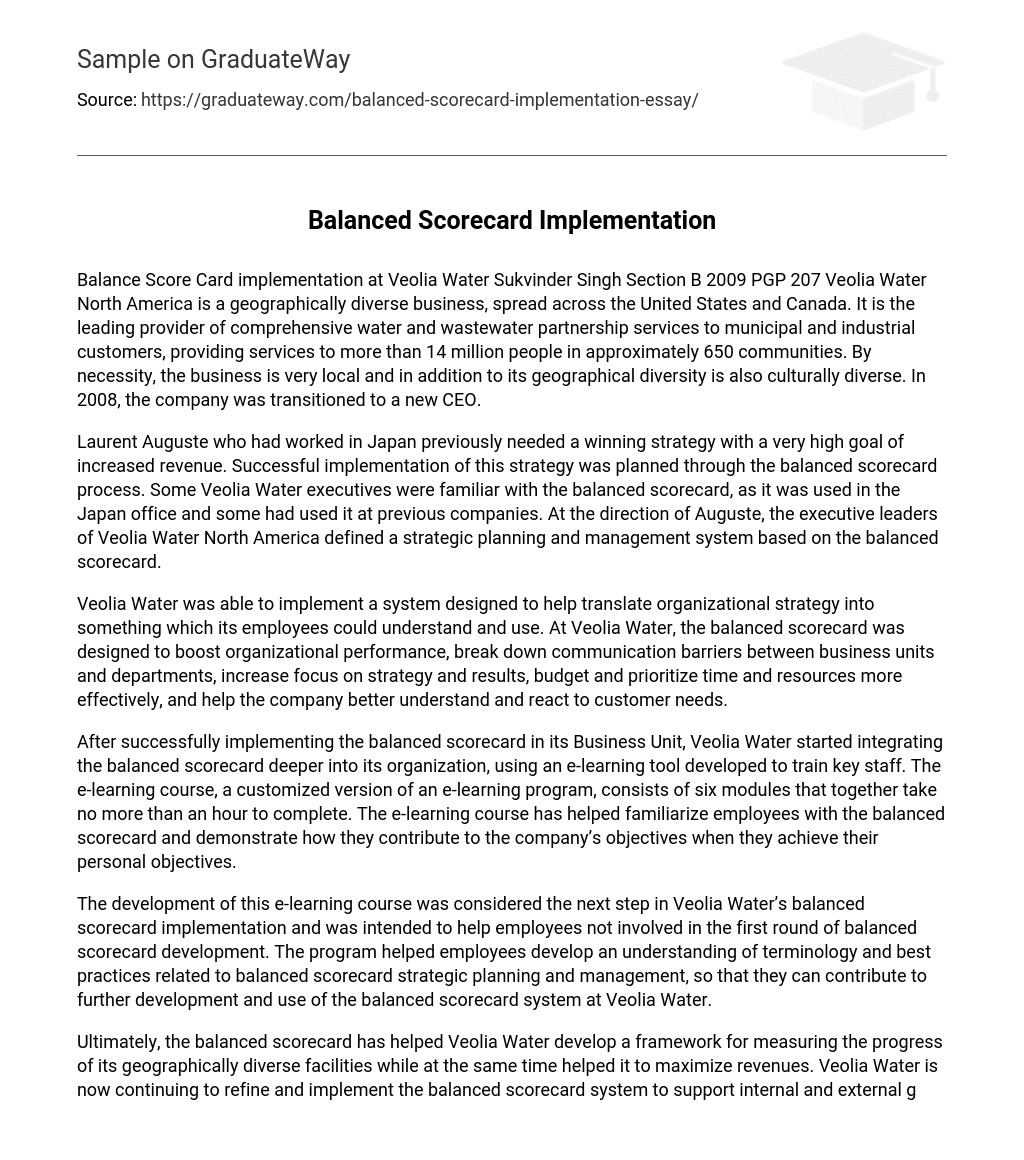A balanced scorecard is a performance measurement system that was developed in the 1990s by Drs. Robert Kaplan and David Norton. It is a framework that helps organizations translate their strategic objectives into specific, measurable, actionable, relevant, and time-bound (SMART) objectives and metrics in four perspectives: financial, customer, internal process, and learning and growth.
The financial perspective measures the organization's financial performance and focuses on the bottom line. It includes financial metrics such as revenue, profit, return on investment (ROI), and shareholder value.
The customer perspective measures how well the organization is meeting the needs and expectations of its customers. It includes customer satisfaction, loyalty, and retention rates, as well as customer acquisition and retention costs.
The internal process perspective measures the effectiveness and efficiency of the organization's internal processes and systems. It includes metrics such as cycle time, quality, and productivity.
The learning and growth perspective measures the organization's ability to learn and adapt, as well as the development and engagement of its employees. It includes metrics such as employee retention, training and development, and innovation.
The balanced scorecard approach aims to provide a more complete picture of organizational performance by considering a range of metrics, rather than just financial measures. It helps organizations align their activities with their strategic objectives and focus on the key drivers of success. It also helps to communicate the organization's strategy to all employees and ensure that everyone is working towards the same goals.
However, the balanced scorecard is not without its limitations. It can be time-consuming and resource-intensive to implement, and it may be difficult to identify the appropriate metrics and targets for each perspective. It is also important to ensure that the selected metrics are aligned with the organization's strategy and are meaningful to the business.
In conclusion, the balanced scorecard is a valuable tool for organizations to measure and manage their performance. By considering a range of metrics across different perspectives, it helps organizations align their activities with their strategic objectives and focus on the key drivers of success. However, it is important to carefully consider the limitations of the balanced scorecard and ensure that it is implemented in a way that is meaningful and relevant to the organization.
A personal research paper is a document that focuses on a specific topic or issue that is of personal interest to the writer. It is an opportunity for the writer to delve into a topic in depth, using their own knowledge and research skills to explore and understand the subject.
There are many benefits to writing a personal research paper. It allows the writer to develop their critical thinking skills, as they must evaluate and analyze various sources of information in order to form their own opinions and conclusions about the topic. It also helps the writer to improve their writing skills, as they must effectively communicate their ideas and findings in a clear and concise manner.
In order to write a successful personal research paper, it is important to start by choosing a topic that is both interesting and feasible. The topic should be something that the writer is passionate about and has a genuine desire to learn more about. It should also be narrow enough to be manageable, but broad enough to allow for a thorough exploration of the subject.
Once a topic has been chosen, the writer should begin the research process. This may involve reading and reviewing relevant literature, conducting interviews or surveys, or collecting data from other sources. It is important to carefully evaluate the credibility and reliability of any sources used, in order to ensure that the information presented is accurate and reliable.
As the research process progresses, the writer should begin to organize their thoughts and ideas into an outline or structure for the paper. This may include creating an introduction, outlining the main points and arguments to be made, and identifying any counterarguments that may be presented.
When writing the actual paper, it is important to use clear and concise language, and to support any claims or arguments made with evidence from the research. The paper should be well-structured, with a logical flow of ideas, and should be free of errors or mistakes.
Overall, writing a personal research paper is a challenging but rewarding experience that allows the writer to delve deeply into a topic of personal interest and to develop their critical thinking and writing skills. It is a valuable opportunity for personal and academic growth and development.
The balanced scorecard is a strategic management tool that was developed in the 1990s by Robert Kaplan and David Norton as a way for organizations to measure and track their performance. The idea behind the balanced scorecard is that traditional financial measures, such as profits and revenues, do not always provide a complete picture of an organization's performance.
The balanced scorecard approach involves looking at an organization's performance from four different perspectives: financial, customer, internal business processes, and learning and growth. By looking at performance from these four perspectives, organizations can get a more well-rounded view of their strengths and weaknesses, and make informed decisions about how to improve.
The financial perspective looks at traditional financial metrics such as profitability, return on investment, and shareholder value. The customer perspective looks at how well the organization is meeting the needs and expectations of its customers. The internal business processes perspective looks at how efficient and effective the organization's internal processes are, and the learning and growth perspective looks at how well the organization is investing in its employees and infrastructure to support long-term growth.
One of the key benefits of the balanced scorecard approach is that it allows organizations to identify and track the key drivers of their success. By looking at performance from multiple perspectives, organizations can better understand the relationships between different aspects of their business and identify the areas where they need to improve.
In addition to tracking performance, the balanced scorecard approach also encourages organizations to set clear, measurable goals and objectives. By setting specific targets for each of the four perspectives, organizations can better align their resources and efforts to achieve their desired outcomes.
Overall, the balanced scorecard is a powerful tool that can help organizations better understand and improve their performance. By looking at performance from multiple perspectives and setting clear goals and objectives, organizations can make more informed decisions and drive long-term success.

